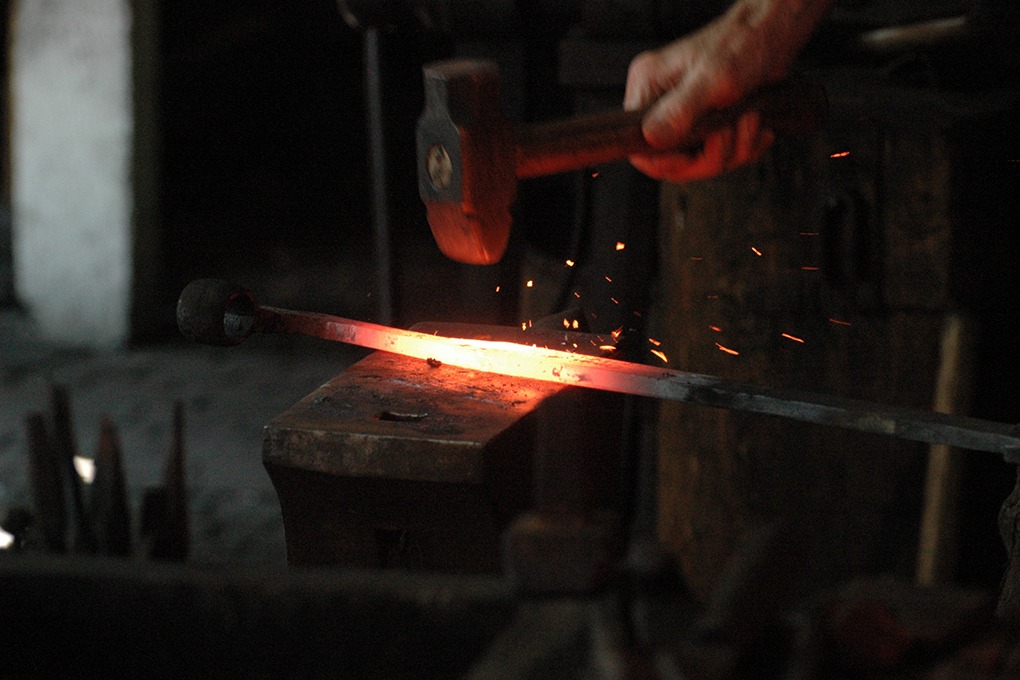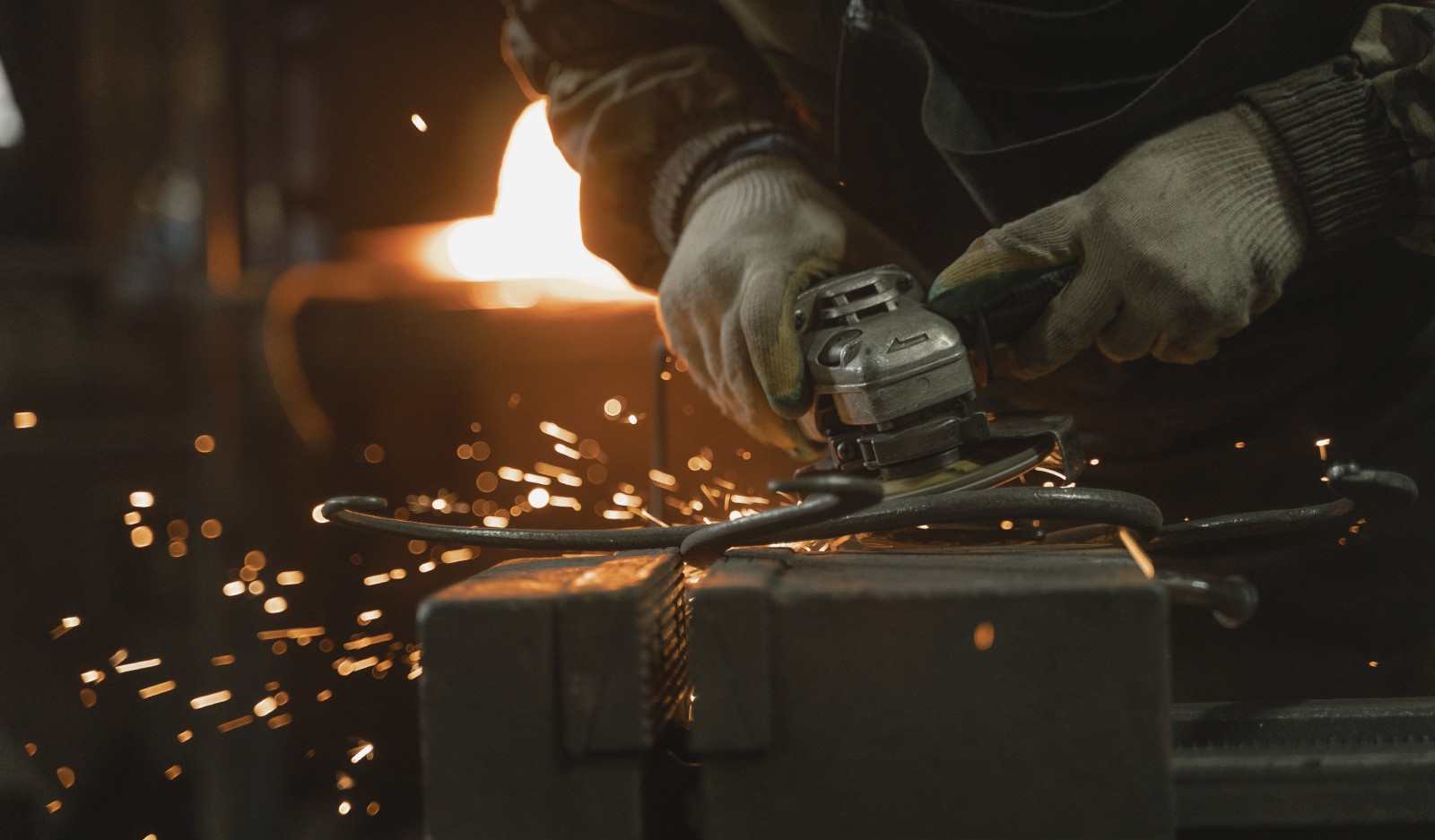Unless you grew up at a time when apple bobbing was a common pass-time and people actually knew what a maypole was, you probably aren’t too familiar with steel forging.
Forging is an ancient manufacturing process for shaping metal products. As you may know, steel is an alloy or iron and carbon, and forged steel is that which has been compressed under extremely high pressure in order to make it very hard and very strong.
Traditionally, steel products were forged by a smith, who would heat a length of steel and beat it into shape atop an anvil using a hammer. However, since the industrial revolution, highly engineered processes, large machines and hydraulic hammers have been used to forge steel products.
In a way, steel forging can be seen as the precursor to modern steel fabrication. Let’s take a look at the history of steel forging, the techniques used and the properties the process imparts on steel.

Here is a look at the history of steel forging, the different techniques used and the properties the process imparts on steel.
Forging Through History
The process of forging can be traced back to ancient times, to the Chinese and Persians, who used it to manufacture a wide range of products, from kitchenware and tools to weapons and jewellery.
It is one of the oldest known metalworking processes, dating back to at least 4500 BC, and perhaps even earlier. As the need for metal products expanded exponentially through the ages, so too did the need for efficient manufacturing processes, and thus forging techniques were constantly being refined and developed throughout history.
One of the most significant developments came from widespread discovery of water (hydro) power between 500 and 1500 A.D, which became the universal technique for forging metals across Asia and Europe by the 12th century. Some hydro powered hammers were still being used as a late as the 20th century.
One of the major developments to come out of the industrial revolution was the invention of the steam engine. A steam hammer built in 1891 by the Bethlehem Iron Company was capable of delivering a 125-ton blow.
In the 20th century, steam hammers were gradually replaced by mechanical and hydraulic presses (but some are still in use).
These days, a more modern form of computer controlled forging is available which provides greater control and efficiency. Plus you don’t need a donkey pushing around a giant wheel to make it work.
Techniques and Processes of Steel Forging
The techniques and processes of forging will depend on the type of metal being used. For steel forging, there are three categories depending upon the forming temperature:
Hot forging of steel – Forging temperatures above the recrystallisation temperature between 950–1250 °C. This results in good formability requiring relatively low forming force, with constant tensile strength showing in the workpieces.
Warm forging of steel – Forging temperatures between 750–950 °C. This results in limited formability and higher forming forces than is required for hot forging.
Cold forging of steel – Forging is done at room temperature, self-heating up to 150 °C due to the forming energy. This results in low formability, and high forming forces are required.
As you might have guessed, for industrial processes, steel alloys are primarily forged in hot conditions to ensure maximum malleability of the metal.
The Properties of Forged Steel
Strength – Forging steel imparts greater tensile strength, which encourages dislocation at an atomic level. This means it is stronger, tougher, and more durable than steel products that have been manufactured using other techniques, such as casting.
Consistency – Seeing as forging uses the exact basic process each time, it can be expected that there will be a high degree of consistency between steel products forged at the same plant.
Tight grain structure – Forging produces a tight grain structure that makes the steel mechanically strong, meaning there is less need for alloys to attain high strength components.
No defects – The process of forging steel literally beats out defects such as porosity, cracks and blowholes.
Anisotropic – Forged steel is anisotropic meaning it has a different grain structure in different directions, resulting in different properties in transverse and axial directions.
Source Your Steel from Steel Fabrication Services
Our team of expert structural steel fabricators have the experience and knowledge to answer any of your questions and will ensure that you find the best solution to suit your needs. To contact us today, simply call, fax, email or drop by our Brookvale location.
While you’re here, read more about steel and its history:
Who Invented Steel? The Steel Production Timeline Explained
